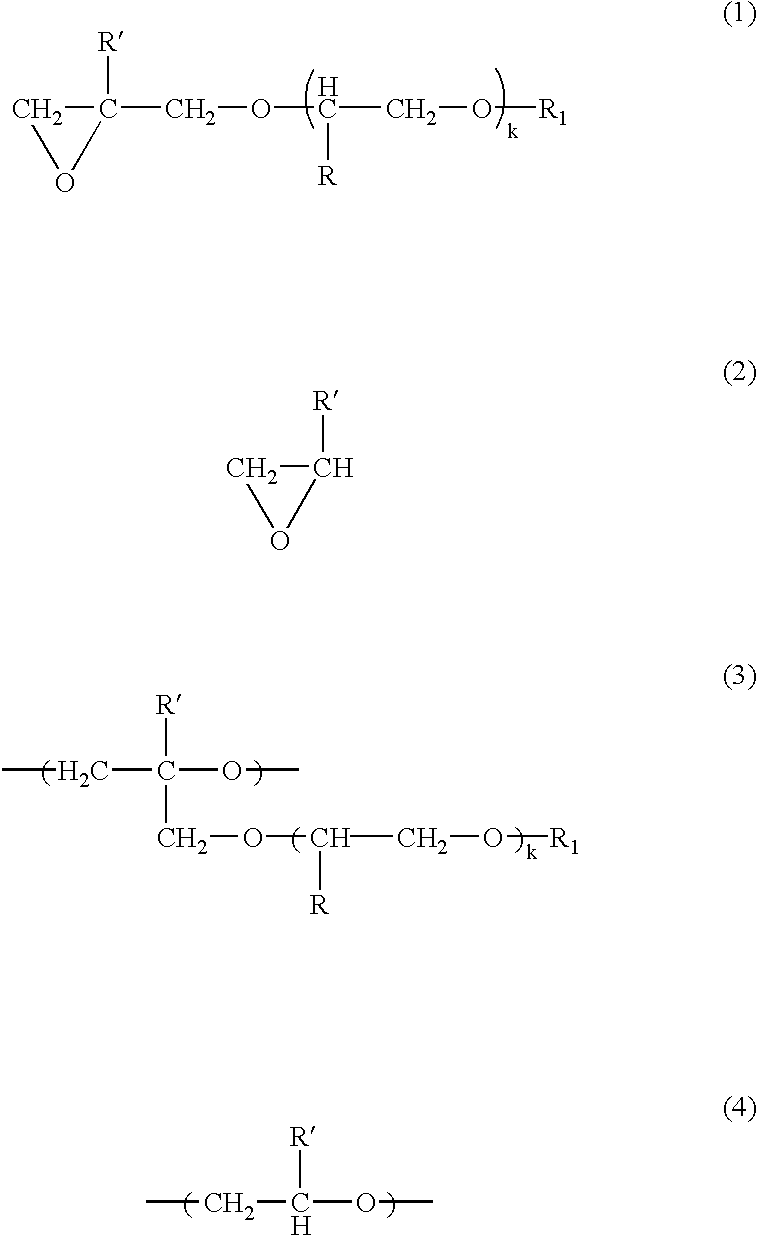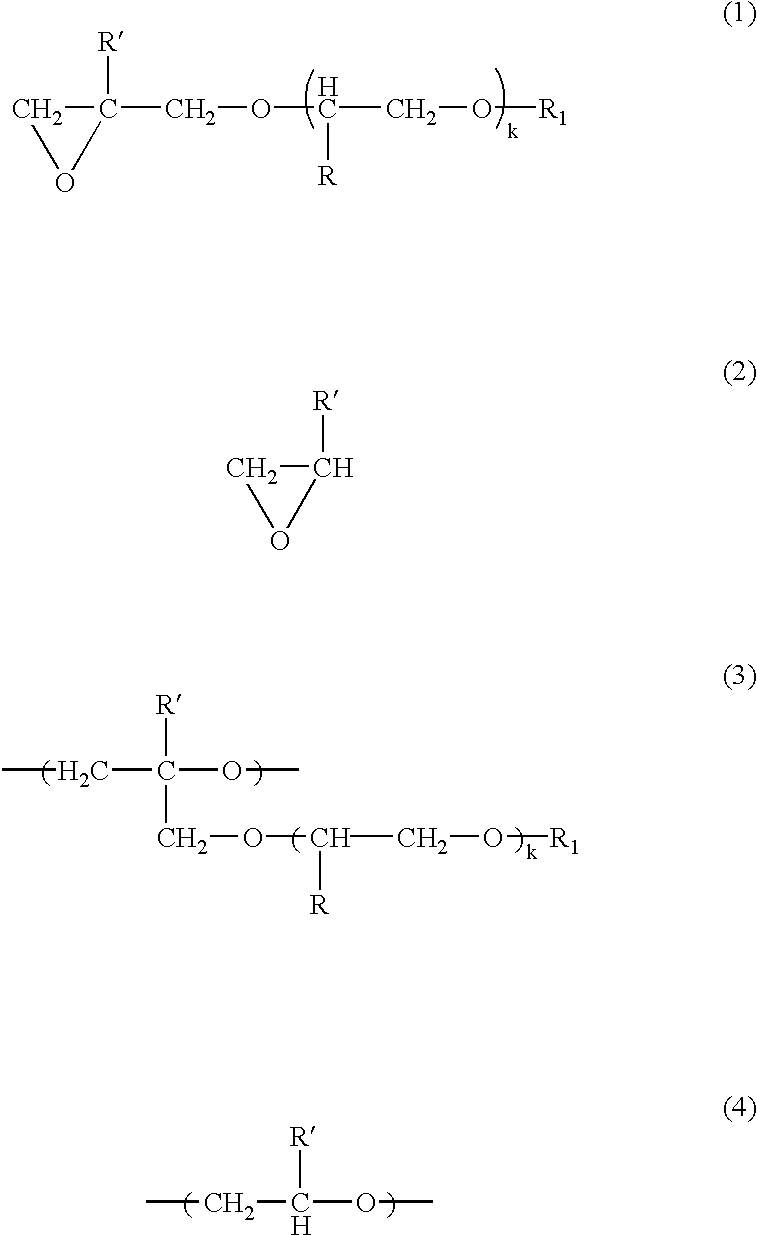Porous film, process for producing the same, and uses thereof
a technology of porous film and olefin resin, which is applied in the field of porous, can solve the problems of high strength, poor affinity for polyolefin resin, and longer time for the impregnation of the structure,
- Summary
- Abstract
- Description
- Claims
- Application Information
AI Technical Summary
Benefits of technology
Problems solved by technology
Method used
Image
Examples
production example 1
Production of Ether Multicomponent Polymer A
[0077] The atmosphere in a four-necked glass flask having a capacity of 3 liters was replaced with nitrogen. Into this flask were introduced 0.3 g of the organotin-phosphoric ester condensate as a catalyst, 75 g of the glycidyl ether compound represented by the following formula (5) 2
[0078] regulated so as to have a water content of 10 ppm or lower, and 2,000 g of n-hexane as a solvent. Thereto was gradually added 325 g of ethylene oxide while following the conversion into polymer of the glycidyl ether compound by gas chromatography. The polymerization reaction was terminated with methanol. After completion of the polymerization, the polymer yielded was taken out by decantation and subsequently dried first at ordinary pressure and 40.degree. C. for 24 hours and then at a reduced pressure and 45.degree. C. for 10 hours. Thus, an ether multicomponent polymer A was obtained in an amount of 380 g.
[0079] This ether multicomponent polymer A had ...
production example 2
Production of Ether Multicomponent Polymer B
[0080] The same procedure as in Production Example 1 was conducted, except that the amounts of the glycidyl ether compound represented by formula (5) and ethylene oxide were changed to 200 g each. Thus, an ether multicomponent polymer B was obtained in an amount of 385 g.
[0081] This ether multicomponent polymer B had a weight average molecular weight of 2.1.times.10.sup.6. The composition of this ether multicomponent polymer B in terms of monomer unit proportion (molar ratio) as determined from a proton NMR spectrum was such that glycidyl ether compound (5) / ethylene oxide=19 / 81.
production example 3
Production of Ether Multicomponent Polymer C
[0082] The same procedure as in Production Example 1 was conducted, except that the amounts of the glycidyl ether compound represented by formula (5) and ethylene oxide were changed to 110 g and 290 g, respectively. Thus, an ether multicomponent polymer C was obtained in an amount of 380 g.
[0083] This ether multicomponent polymer C had a weight average molecular weight of 3.2.times.10.sup.6. The composition of this ether multicomponent polymer C in terms of monomer unit proportion (molar ratio) as determined from a proton NMR spectrum was such that glycidyl ether compound (5) / ethylene oxide=12 / 88.
PUM
| Property | Measurement | Unit |
|---|---|---|
| Percent by mass | aaaaa | aaaaa |
| Percent by mass | aaaaa | aaaaa |
| Percent by mass | aaaaa | aaaaa |
Abstract
Description
Claims
Application Information
 Login to View More
Login to View More - R&D
- Intellectual Property
- Life Sciences
- Materials
- Tech Scout
- Unparalleled Data Quality
- Higher Quality Content
- 60% Fewer Hallucinations
Browse by: Latest US Patents, China's latest patents, Technical Efficacy Thesaurus, Application Domain, Technology Topic, Popular Technical Reports.
© 2025 PatSnap. All rights reserved.Legal|Privacy policy|Modern Slavery Act Transparency Statement|Sitemap|About US| Contact US: help@patsnap.com



